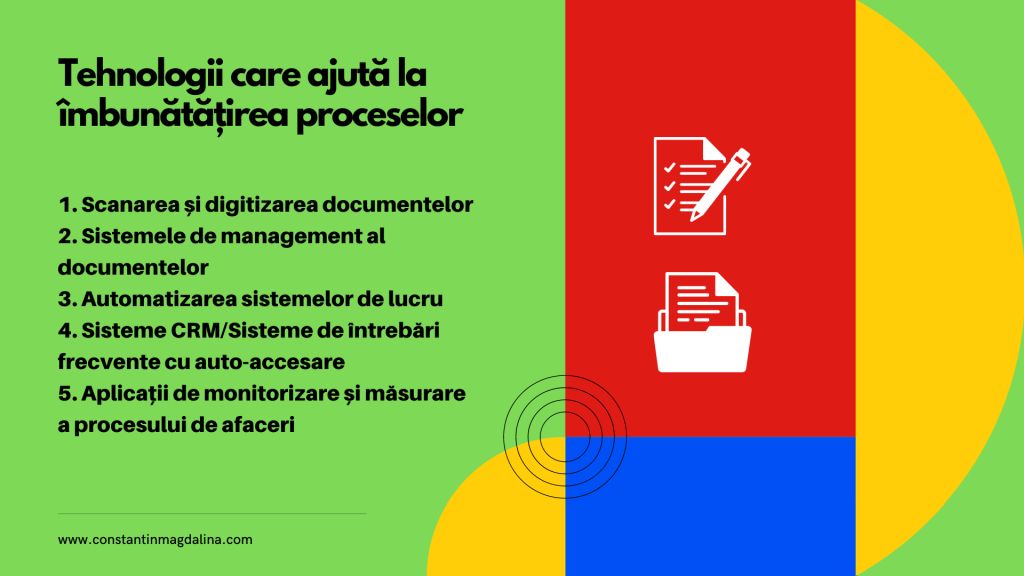
The pandemic brought our stores home. Couriers have become as well-known as our neighbors, and online commerce has flourished. The Internet has made the time factor an indicator that guides the click to purchase products/services. At the same time, the Internet has made remarkable improvements in business processes, be they marketing, sales, supply chain, or finance. Direct marketing interactions with the target audience, streamlining the sales process, speedy order processing, and instant invoicing, are all notable examples of the role that the Internet plays in process improvement efforts.
Process cycle efficiency in the Lean approach
Online commerce and services focusing on process cycle efficiency as a measure of execution speed mark the first step in understanding the relevance of the Lean approach. The efficiency of the process cycle is given by the ratio between the time with added value for the customer and the total time elapsed until the order arrives or accesses the service, as the case may be.
A Lean process has a process cycle efficiency of 25% or more. Most business processes are not Lean. About 20% of the activities contribute to 80% of the losses/inefficiencies in the process.
Therefore one of the main objectives of Lean is to increase the speed of the process by eliminating worthless activities and losses from the process.
Technologies that help improve processes
The use of the Internet has improved the business process by changing the processing and delivery times of an order. Similarly, there are a number of other technologies that help in process improvement efforts, such as the Internet.
Here are 5 of these technologies and examples that show how they help improve Lean:
1. Scanning and digitizing documents
Computer storage has become so cheap that many companies scan and digitize most official documents that come in paper form. These can be contracts or invoices from service providers, consumables or raw materials. Subsequently, this process allows the circulation of the digital version of the documents, rather than the loss-making movement of physical paper throughout the company. Digitization also allows processes to run smoothly, making it possible for employees in long-distance offices to participate in the same workflow.
2. Document management systems
These systems allow a company to run business processes that require collaboration between geographic areas and even continents. They allow people from different cities or countries to work collaboratively on a business process, making sure that the changes they make are made in an orderly manner and that nothing is lost during the collaboration.
Document management systems allow documents to be extracted for editing and need to be re-entered once completed. This way, changes made by different people on the same document are not lost. In many business processes, this has the potential to eliminate losses due to movement and, most importantly, the quality of collaborative involvement. In the absence of such systems, more time may be spent sending documents back and forth by e-mail and coordinating changes to the same documents by different people.
3. Automation of work systems - Many business processes suffer from the physical movement of paper from one office to another. When a piece of paper arrives at the next desk, it waits behind other paperwork that has arrived before her. Automatic workflow systems can keep the process moving by issuing alerts if certain documents have been waiting too long and redirecting them to others if someone is busy. They also provide visibility into actual or potential bottlenecks in a business process, facilitating efforts to improve the Lean process to resolve or prevent them.
4. CRM systems / Self-access FAQs
Many companies have the Customer Relationship Management (CRM) module as part of their website. A customer can log in and create a ticket online for a support or service request, instead of talking to a customer support representative on the phone.
Many companies use FAQ sections on their websites linked to question bookstores that have predefined answers and where customers can see if their problem has been encountered by other customers and what the solution was in those cases. These systems speed up customer support and service processes. They are convenient for end customers because they are available on the internet, non-stop, offering a better service than when done over the phone.
5. Business process monitoring and measurement applications
Lean efforts to improve a process are usually very focused on certain steps. Pareto's principle also applies to business processes: 80% of blockages and their improvement usually come from 20% of the steps of a business process. Business process monitoring and measurement solutions can give you a good idea of where these blockages are. More importantly, they allow managers to ensure that the levels of service required for the individual stages of the process are met so that the entire process works optimally.
In conclusion
Lean process improvement efforts aim to increase their speed and improve the efficiency of the process cycle. A number of new information technologies offer the promise of optimizing processes by their proper use. They do this by significantly reducing losses in the form of unnecessary transport, waiting time, and manual data entry. With the help of Lean, companies eliminate their bureaucratic excess, tone their processes, and become more competitive.
About Constantin Magdalina
Constantin Magdalina has 15 years of working experience, while he performed in multinationals both in Romania and abroad. Constantin has a master’s degree in Marketing and Business Communication from the Academy of Economic Studies in Bucharest. He is certified in Lean Six Sigma and ITIL which provide him a good understanding of processes and transformations within organizations. The Chartered Institute of Marketing certification further complemented his expertise and knowledge in business. In those over 4 years of working activity in a Big4 company, he initiated and conducted studies that analyzed different aspects related to the business environment in Romania such as the economic growth predictions of companies in 2013-2016, knowledge management, the buying experience in the age of digital consumers, social media 2013-2015, the utilization of mobile devices in Romania. He is the author of numerous articles on topics related to innovation, the efficiency of business processes, social media, the consumers’ buying experience in the age of digital, trends, and emergent technologies. He is invited as a speaker at numerous events and business conferences.





























